Stairs: A Tale of Two Cities
My two favorite cities put their best feet forward — going up and going down.

For three weeks the elevator was out in my Paris building, being entirely rebuilt. We had been warned several weeks in advance, and in fact the buzz was around the building long before that.
Most of us hoped that the work would be done over the summer, when many people are away. But no. The work was scheduled for the beginning of October, well into the rentrée, and was planned to take ten days.
Ha.
Those weeks were good for my resting heart rate and blood oxygen levels. But when the new elevator opened for business, well, I went back to my old lazy ways.
Stairs are beautiful. I googled this as a question and came up with zilch, so I’ll just be the authority on this topic. Stairs are beautiful.
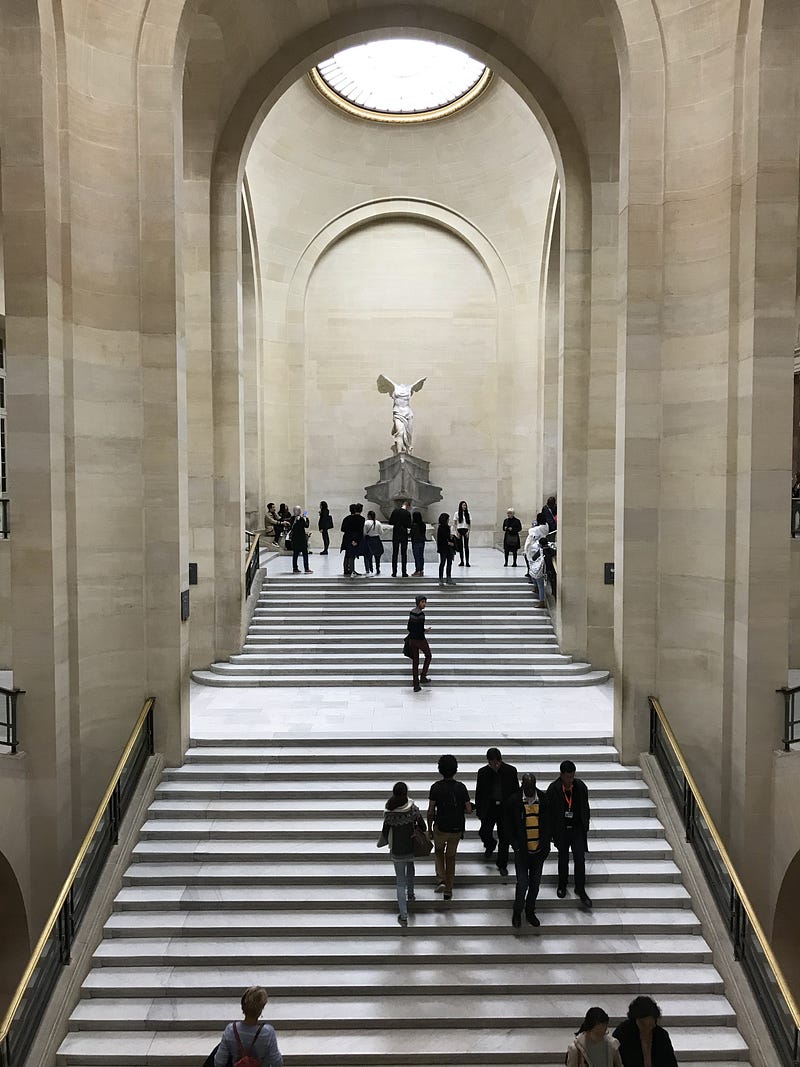
In my two favorite cities, Paris and Portland (Oregon), stair functions are identical, but stair designs are divergent, reflecting their divergent cultures.
Paris stairs tend in two directions (besides up and down — duh): majestic or convenient, kind of an afterthought tucked into the core of the building as if they were a toilet stall. In fact they often lead downward to toilet stalls in cafés and restaurants.
It should be said that most metro stairs, which also lead down, are ugly as s***.
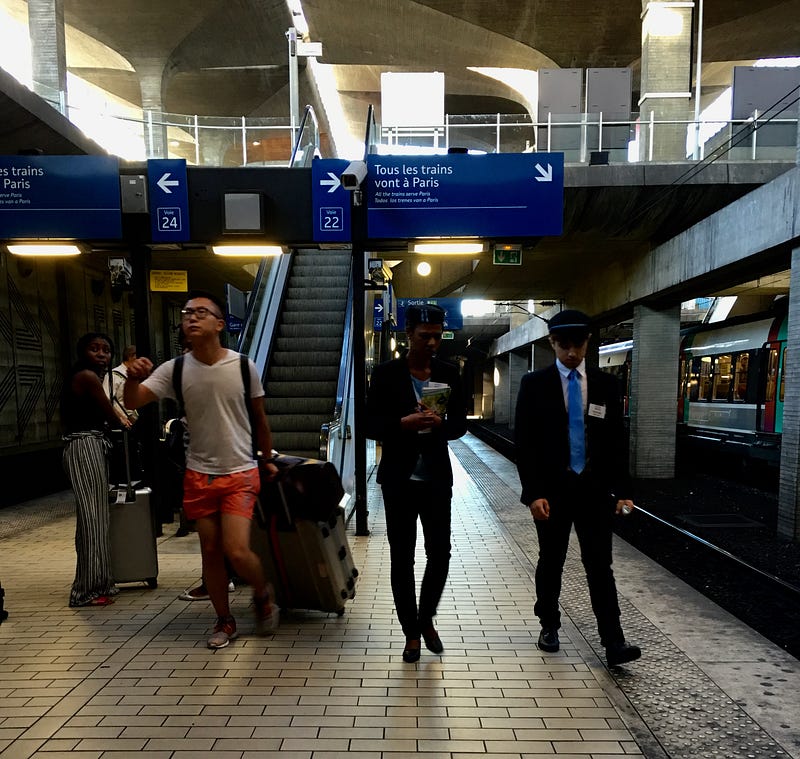


The central court of the Louvre under the I. M. Pei pyramid, pictured below, offers a nod to both kinds of stairways in Paris: an airy gliding spiral into the vast interior.
Although, truth be told, that spiral seems “convenient” only for the staff allowed to use it. However, majestic is an appropriate descriptor, I think.
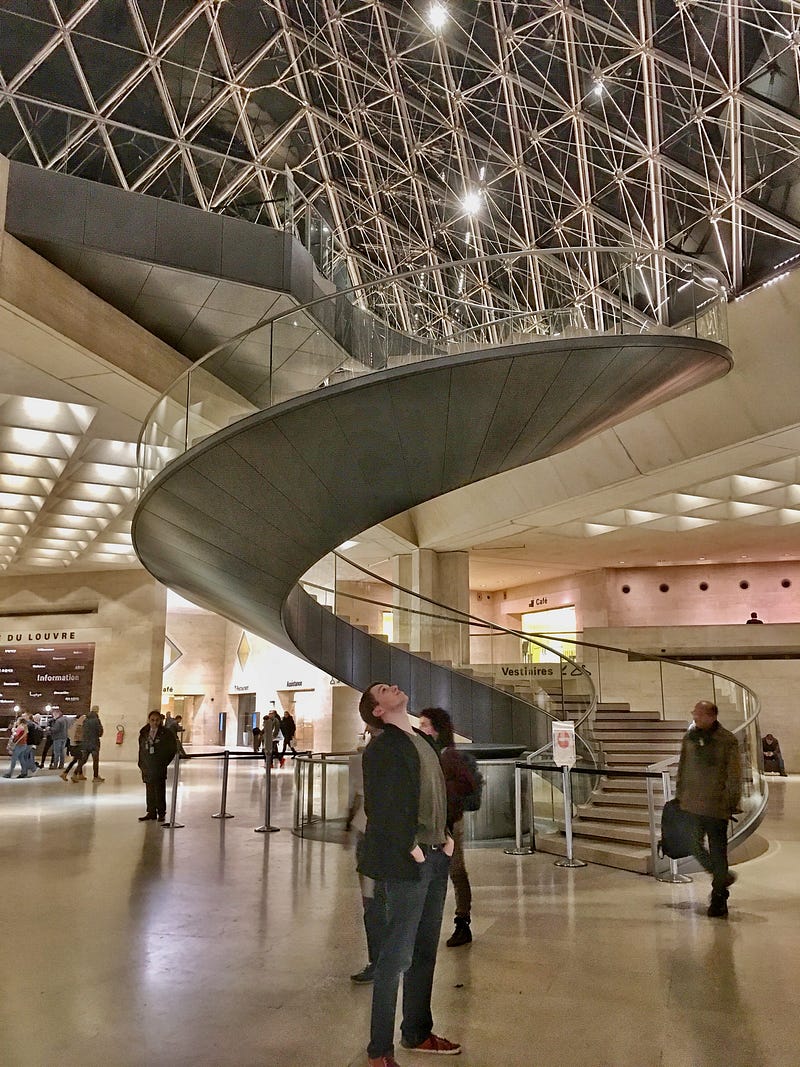
One of the most gorgeous stairways in Paris is a tiny spiral staircase captured and repurposed by David Tepfer for his Atelier de la Main d’Or, a beautiful performance space in the 11th arrondissement.
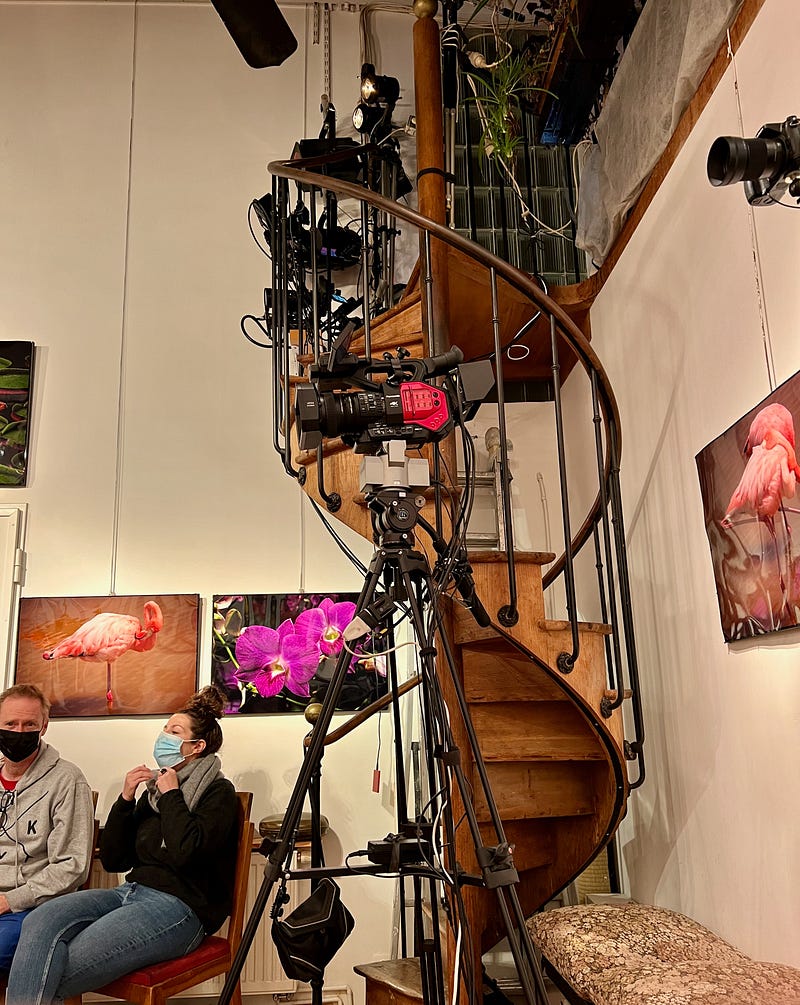
There are four identical spirals on the outside of the Palais de Tokyo (Paris), an otherwise square-ish, block-ish structure, notable for its outdoor courtyard restaurants and its weird modern wall art.
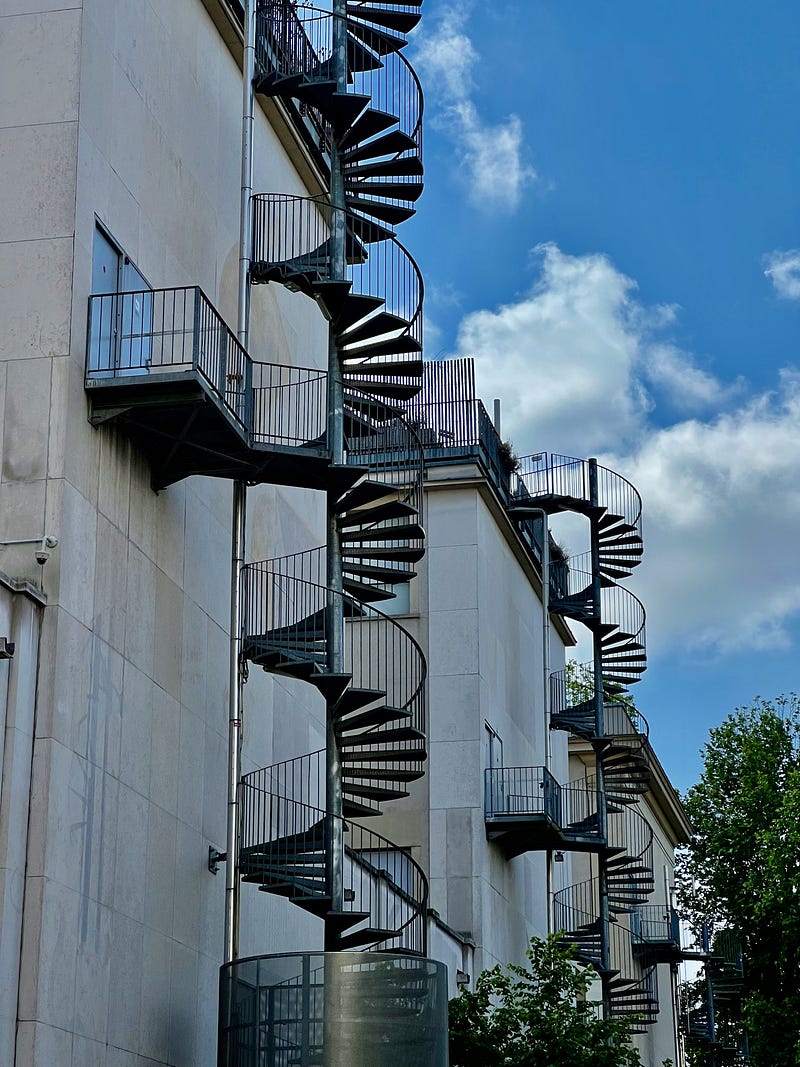
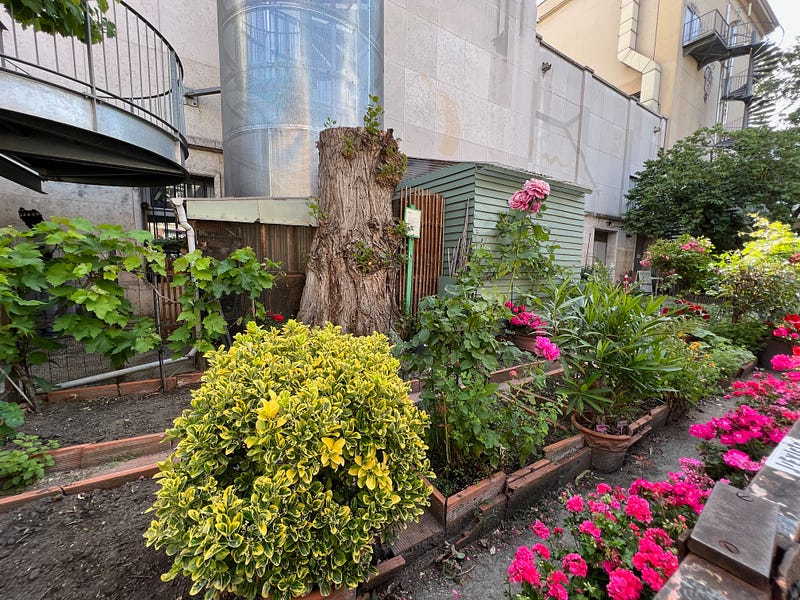
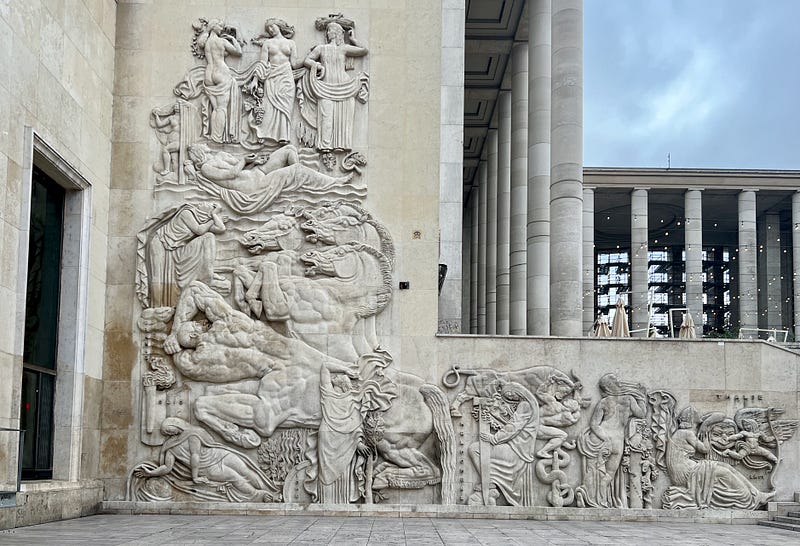
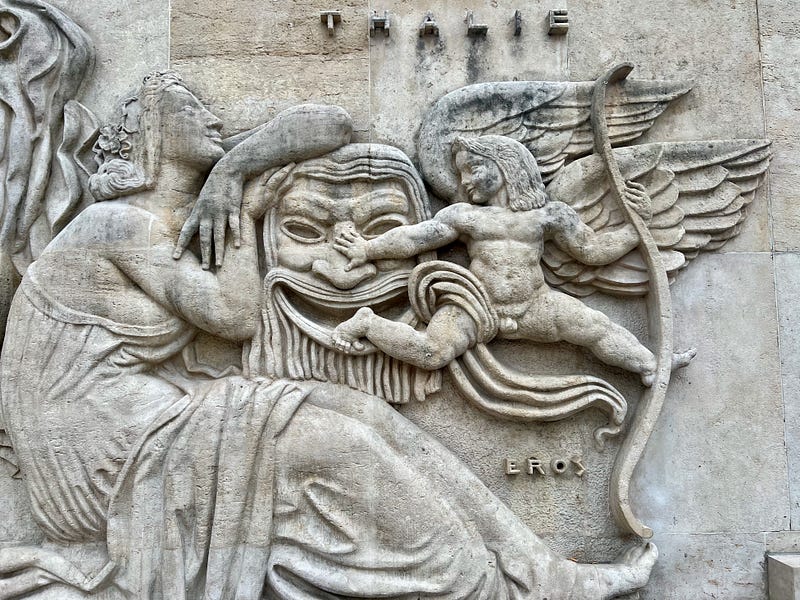
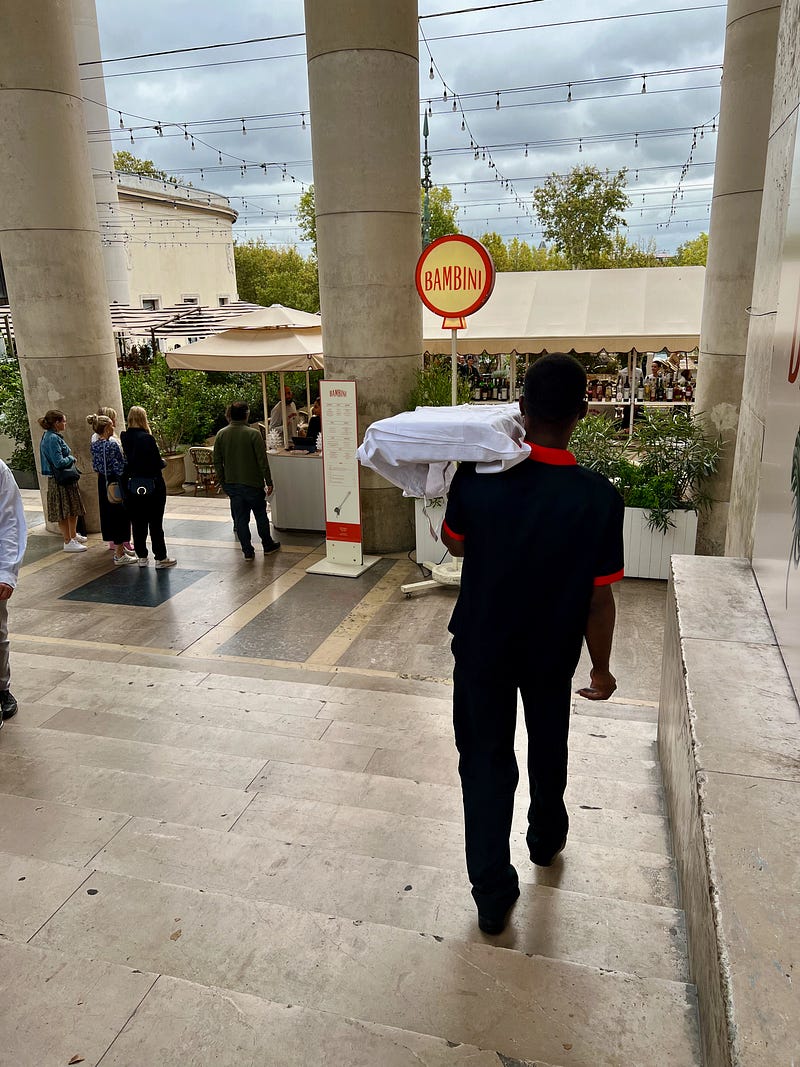
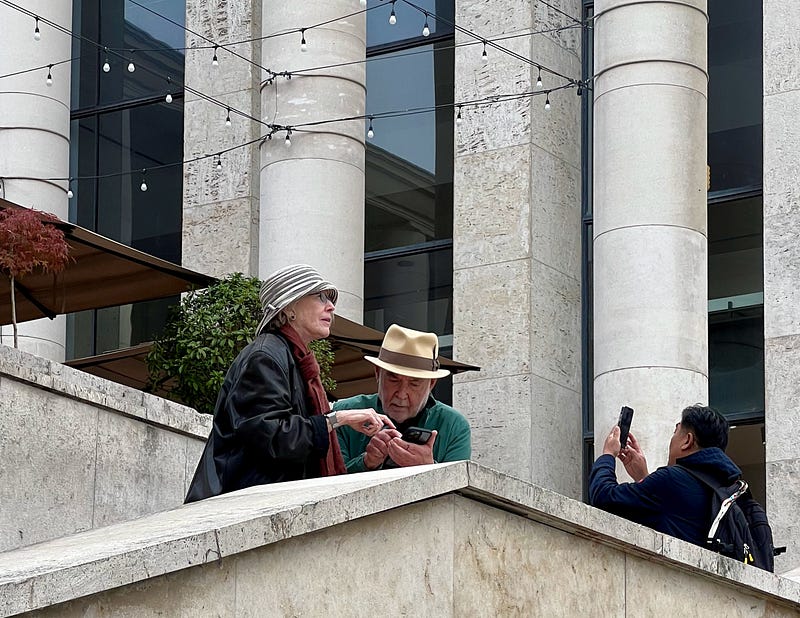
Actually, I’ve been unnecessarily cruel about the Palais de Tokyo. Here is the front, with the curved stairs reflecting the curved pillars, sunlight slashing through the gaps.

On one side of the Palais de Tokyo is Paris’s public Musée d’art moderne, which I like a lot. It’s free, like the other public city museums, and it holds among other treasures Raul Dufy’s La Fée Electricité, a curved room covered with the mural he created for the 1937 International Exposition in Paris, celebrating the history of electricity.
In a completely different mood, the curved stairs leading into the Petit Palais offer a way for the curators to extend current exhibitions.
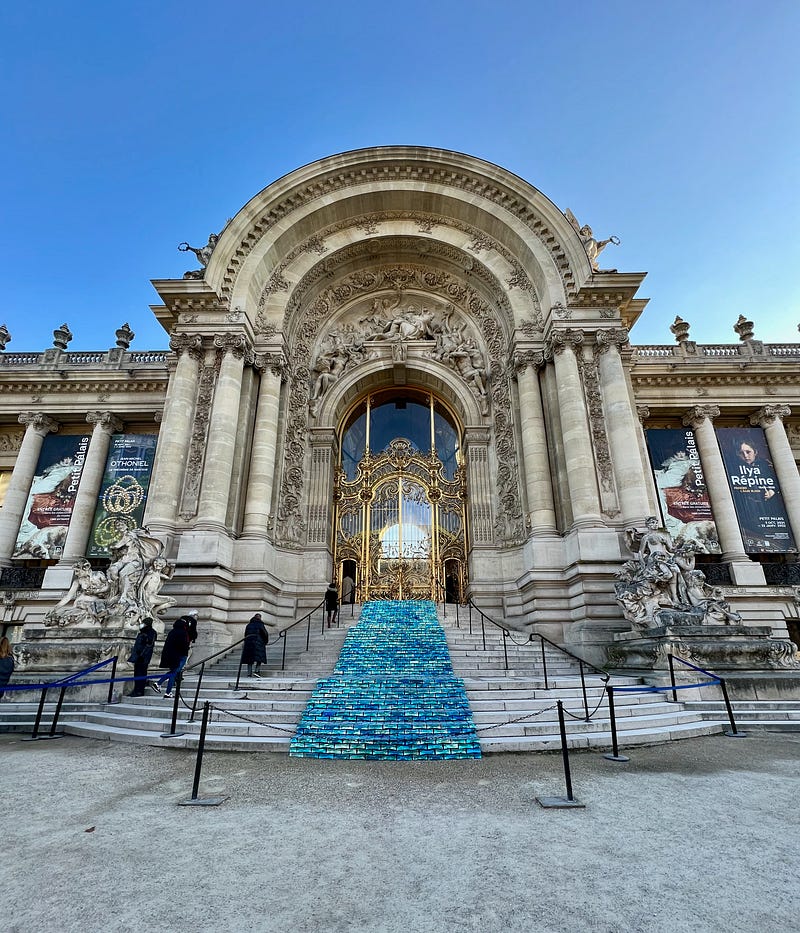
Like the Musée d’art moderne, the Petit Palais is one of the city of Paris’s public museums, and you can stroll in and out at will to view the permanent collections. (An annual membership card that gets you into numerous special exhibits is crazy cheap: forty euros for the fourteen city museums.) The “River” of blue jewels above was part of an exhibit last year by Othoniel, that garlanded the museum and its courtyard garden with sparkling treasures.
Inside the Petit Palais is one of the lovelier staircases of this lovely city, and commands attention in itself. The curves of the staircase, and the graceful ironwork of the railing, caught inside a rounded protrusion of the building, captivate me every time I visit.
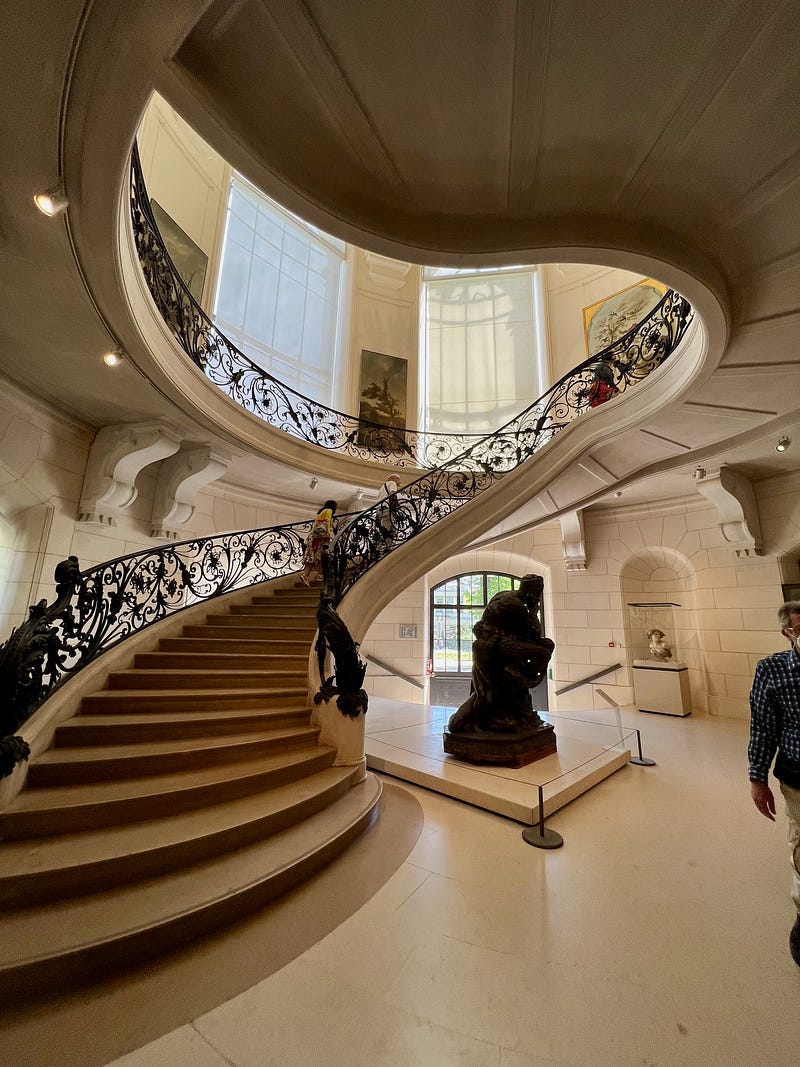
Across the street from the Petit Palais is the Grand Palais, currently under a multiyear renovation.
I’ve attended several huge events there, and I can’t wait to get back inside. (Its functions have been temporarily taken over by the Grand Palais Éphémère, a magnificent structure just kind of thrown up on the Champs de Mars, facing the Eiffel Tower).
Like the Petit Palais and the gaudy Pont d’Alexandre III adjacent to these structures, the Grand Palais was built for the Exposition Universelle de 1900. Its vast interior with its green and gold ironwork reflects on a larger scale the design style of the Petit Palais across the way.
These photos are from Paris Photo of 2017. The Grand Palais is supposed to be partially back “on line” for the summer Olympics in 2024 and is scheduled to host fencing and taekwondo. Full reopening is scheduled for 2025. Fingers crossed.
The stairs, the stairs!
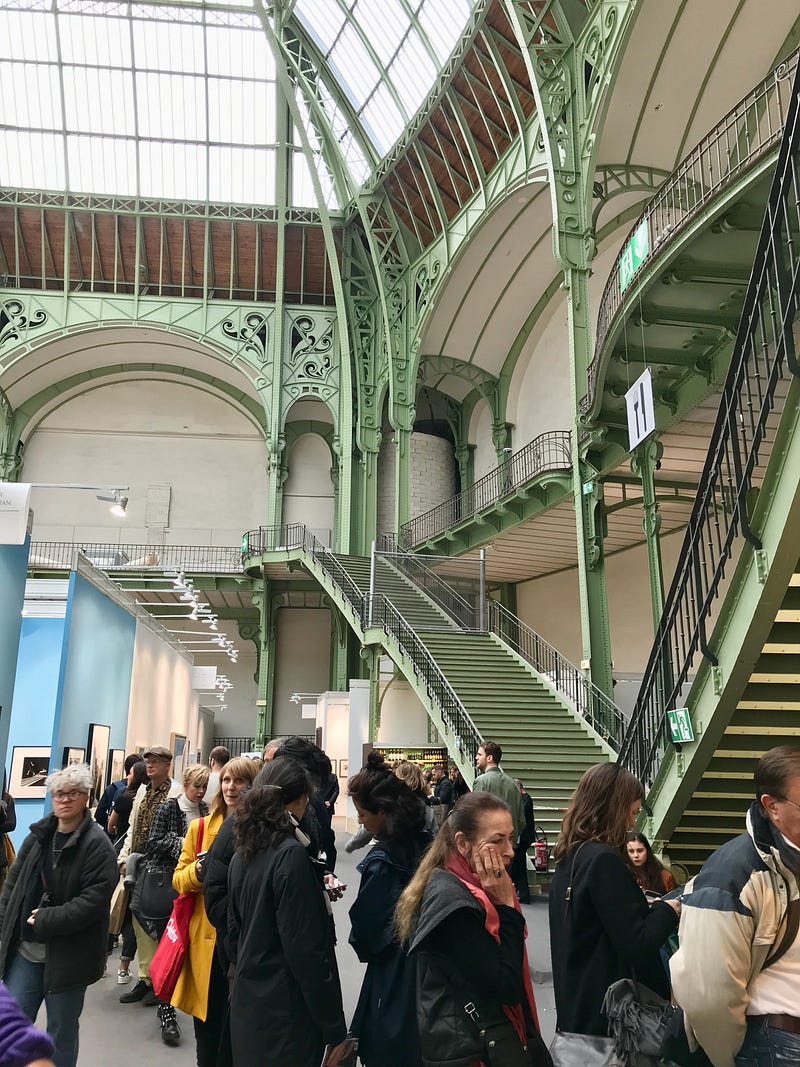
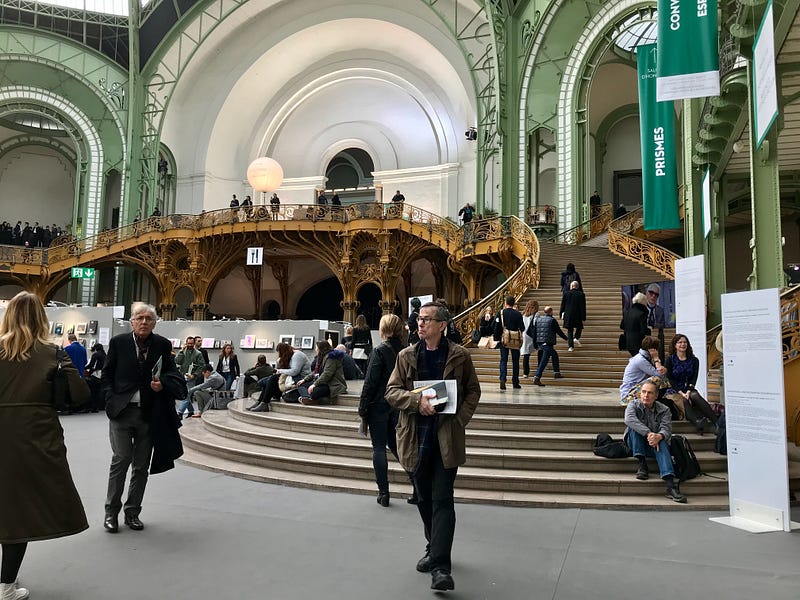
The stairs of Paris are an integral part of its multilevel beauty.
Unlike Lisbon, Salzburg, or the Cinque Terre, Paris doesn’t have the reputation of being a city one must climb — but one must climb Paris, often, outside and in, and Parisians use the stairs in many ways.
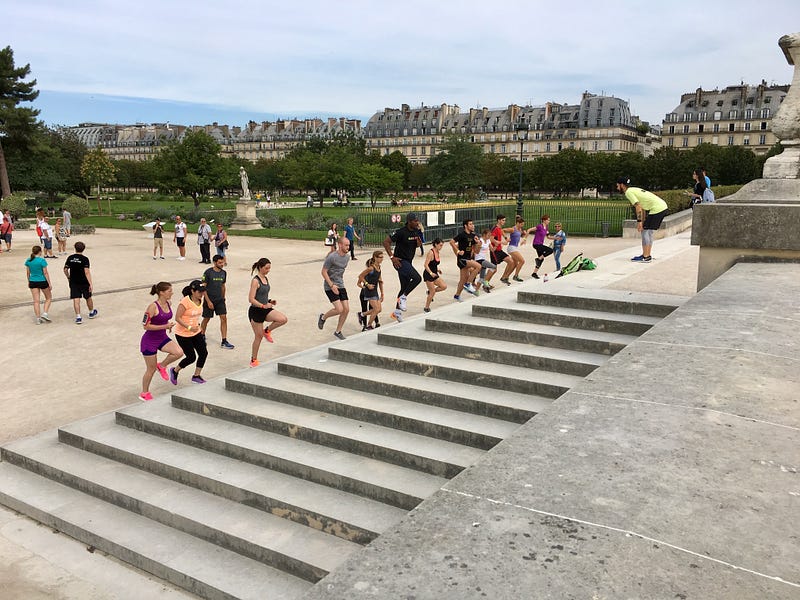
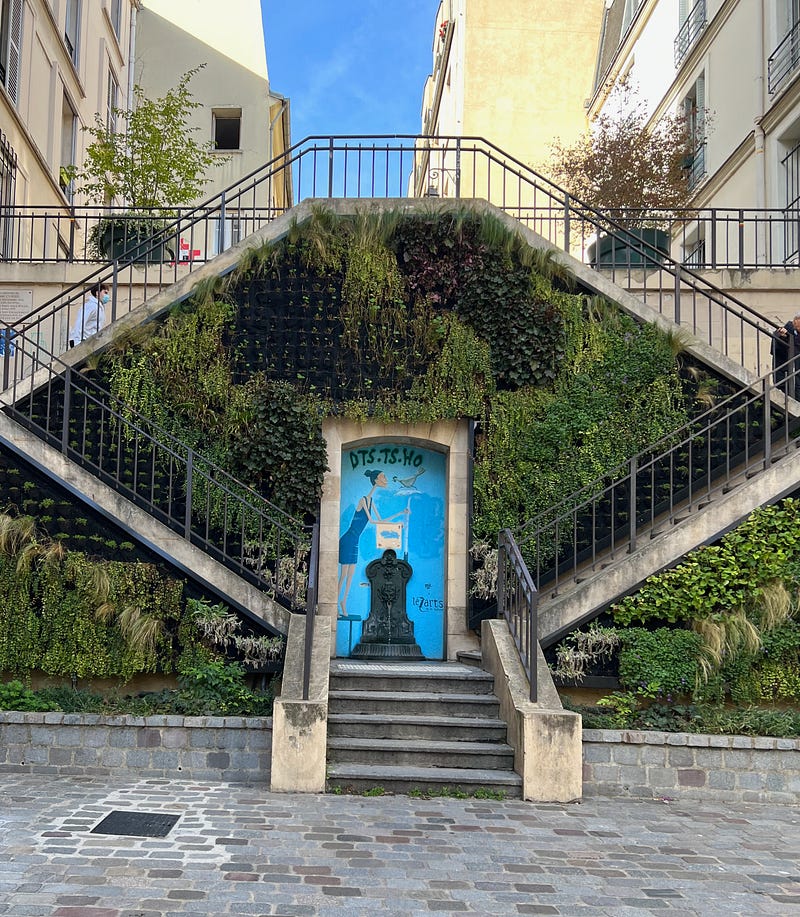
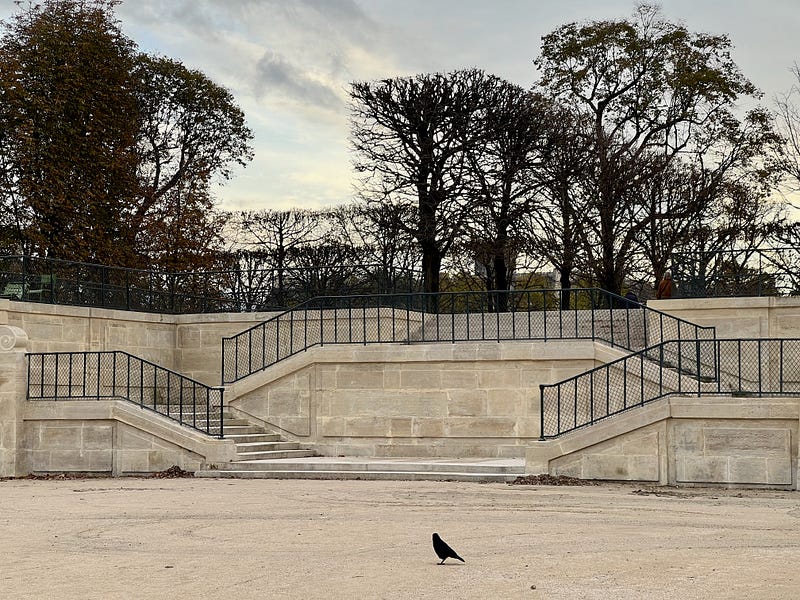
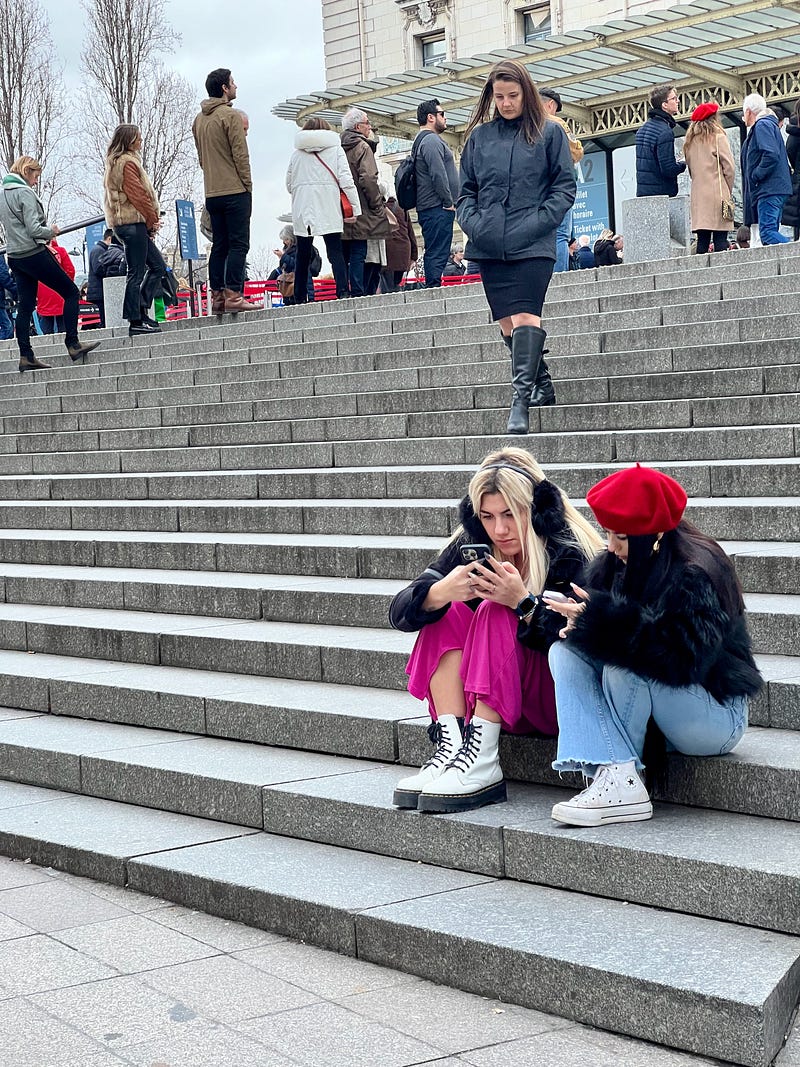
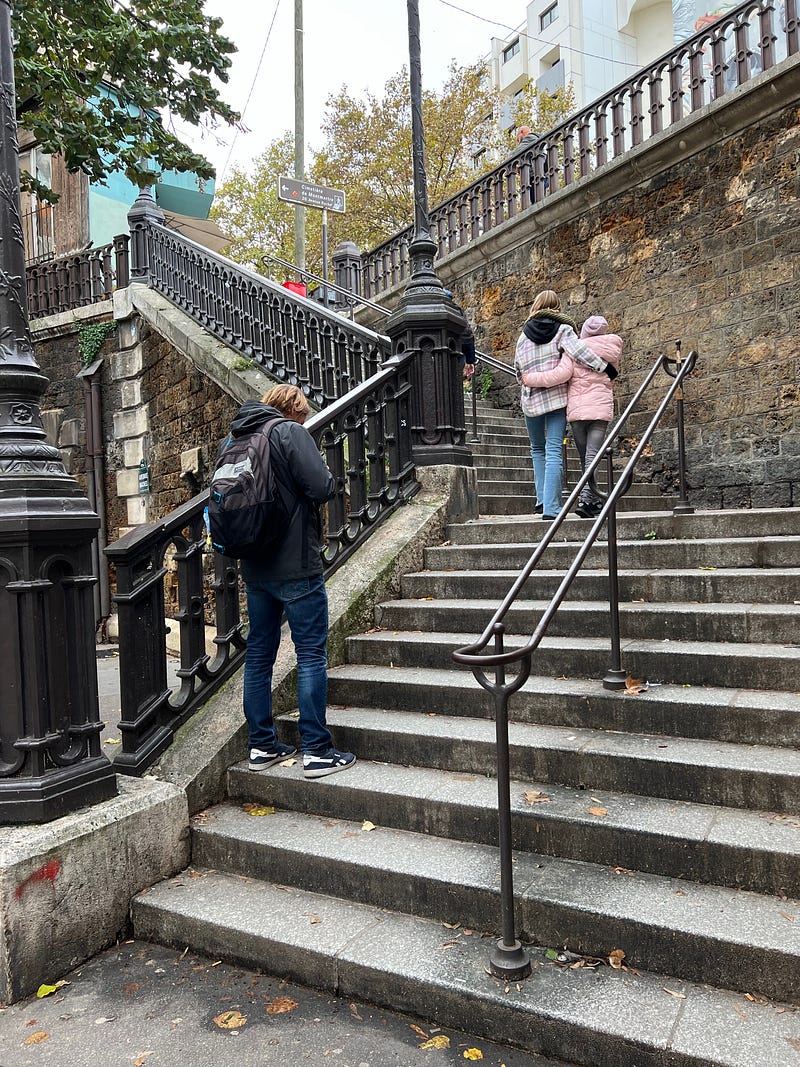
Sometimes nature frustrates even the cleverest inventions of humans — like river walks and boat landings. During the floods of 2017–18, the stairs down to the Seine were not widely used, shall we say, by the public.
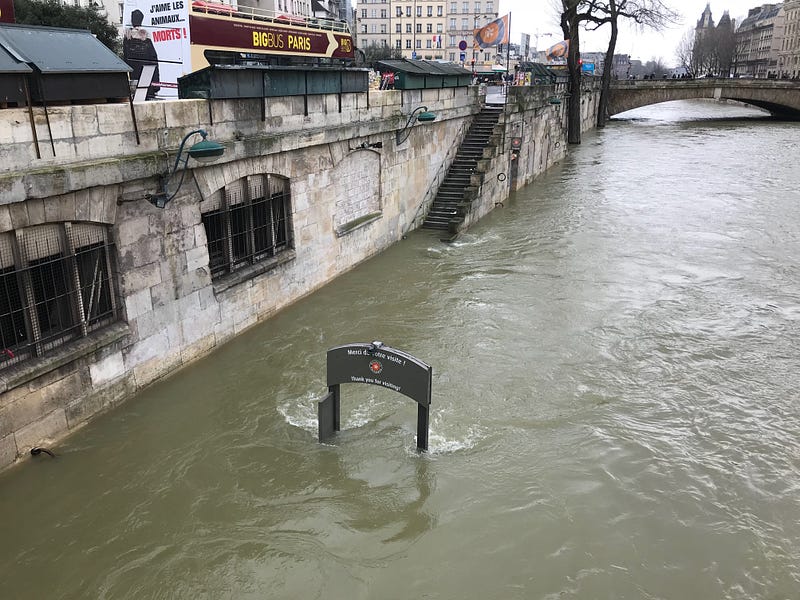
I’ve written elsewhere about the grand stairs of Montmartre, and the fact that if you arrive by metro, you are lured and cosseted up to ground level by an unfolding mural decorating the endless spiral staircase.

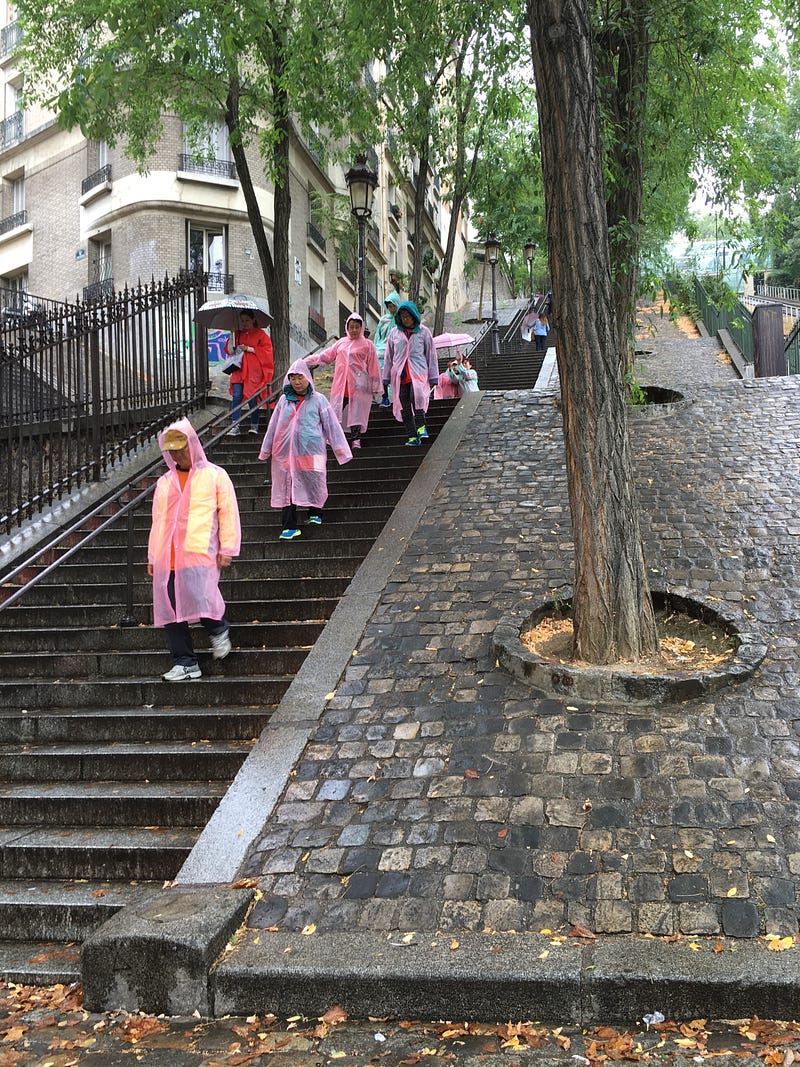
And the ubiquity and necessity of stairs on Montmartre take us to Portland, the hilly Rose City on the west coast of North America.
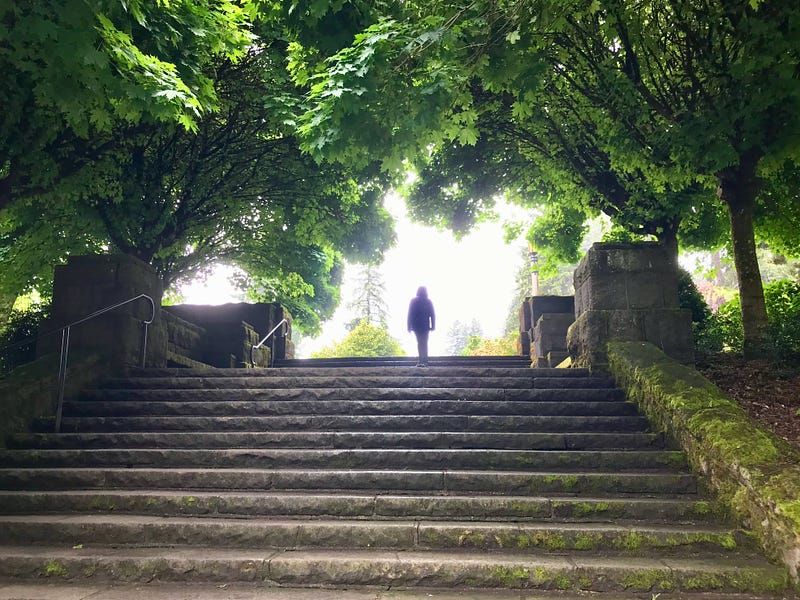
There are stairways in Portland that echo the Parisian stairs: monumental if not majestic.
But while Paris stairs tend to be either majestic or convenient, Portland stairs tend to be cozy and domestic or wild and winding.
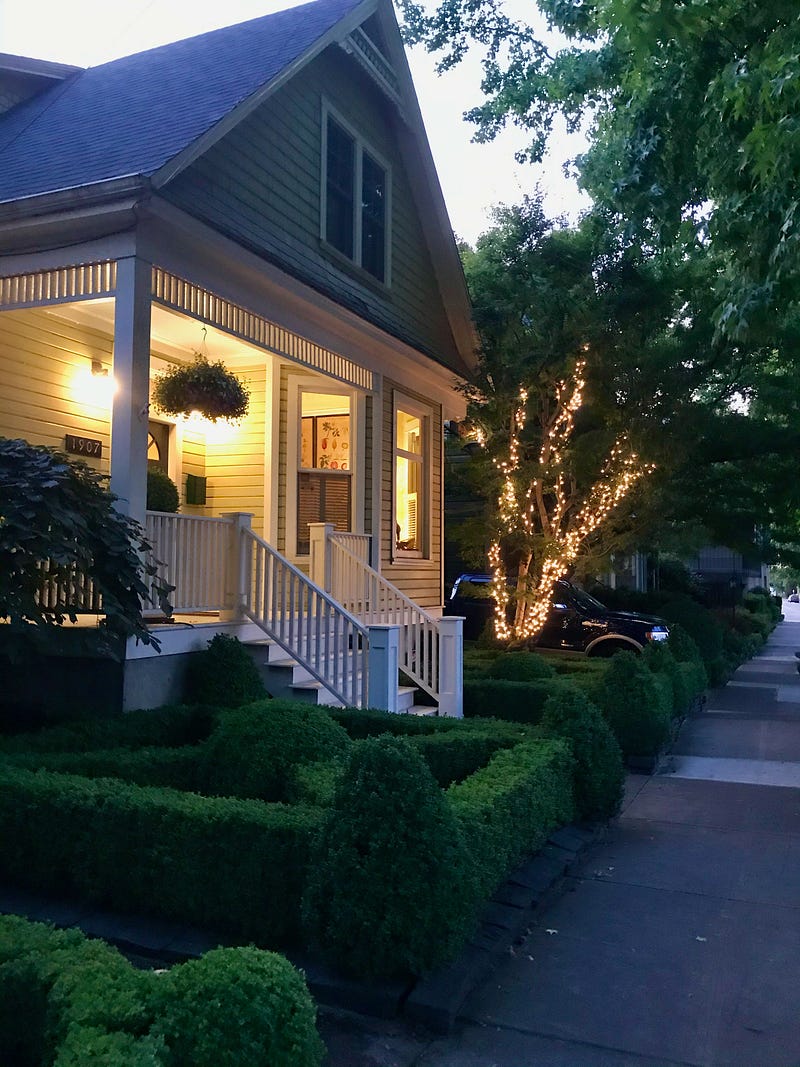
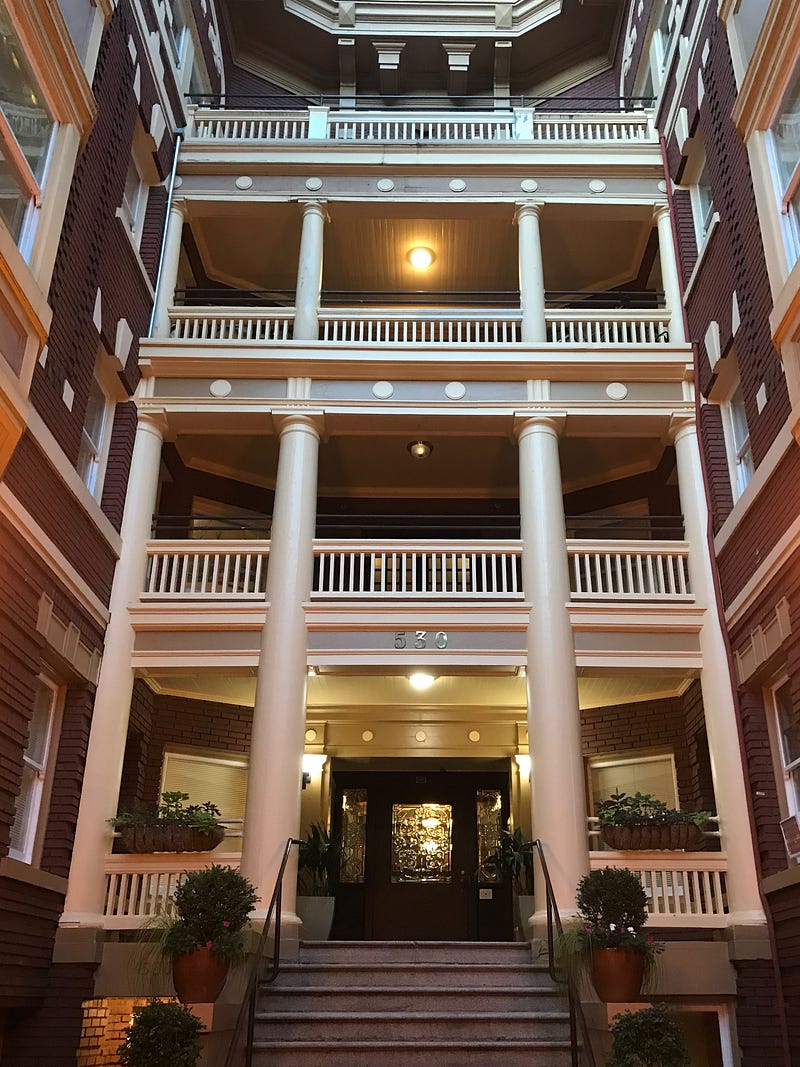
And then there are the homes built on stilts on steep hillsides that require dramatic stairways just to get from the car to the kitchen.

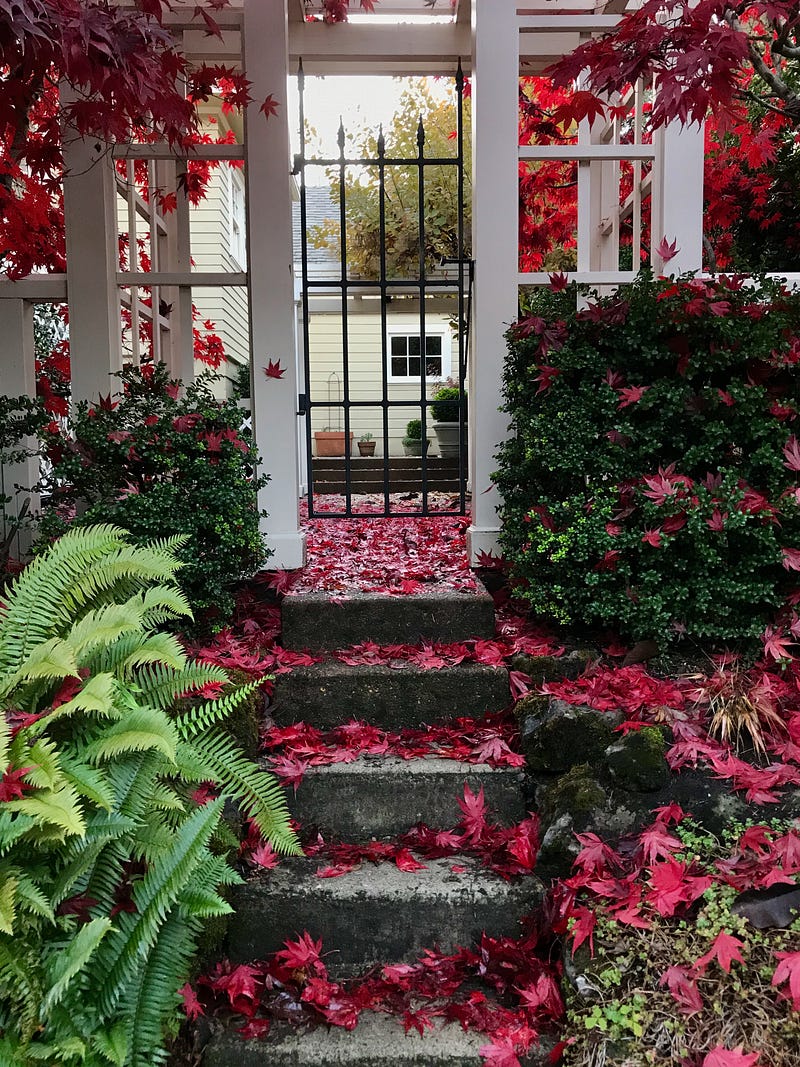
There are weeks in the fall when not raking the leaves may be seen as a design choice.
And then there are the wonderful surprises in Northwest Portland: the stone steps embedded in the wooded hillsides, inviting one up to — who knows what.
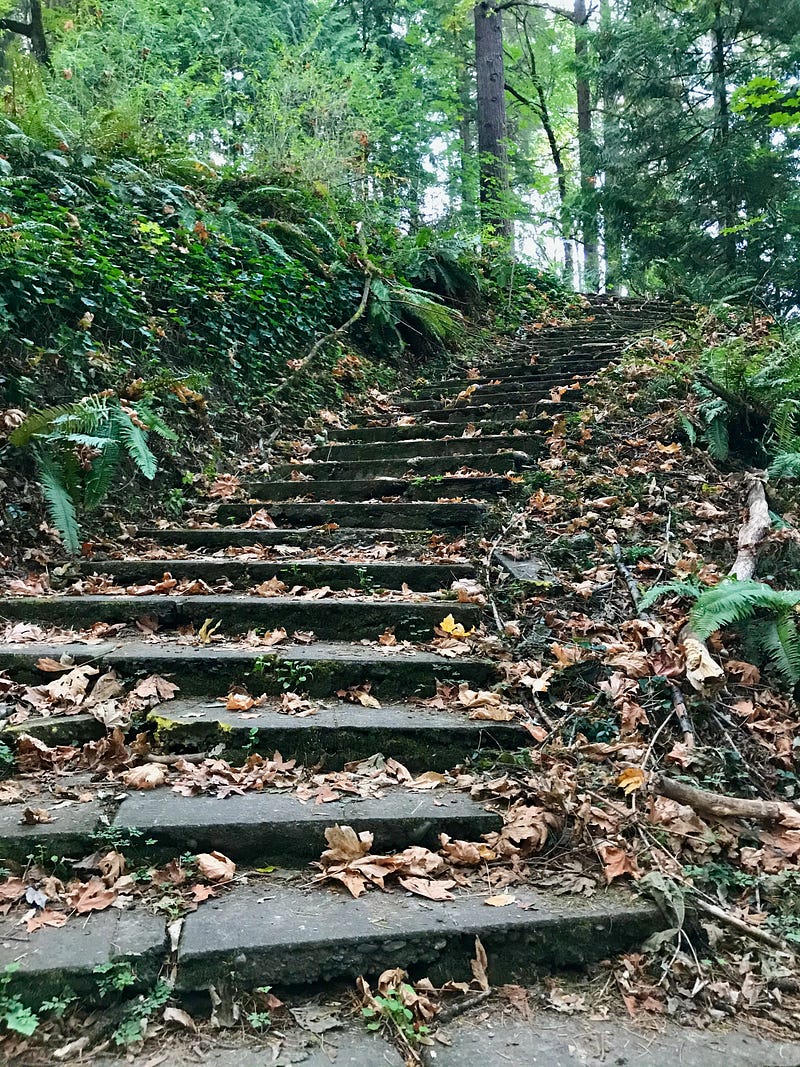
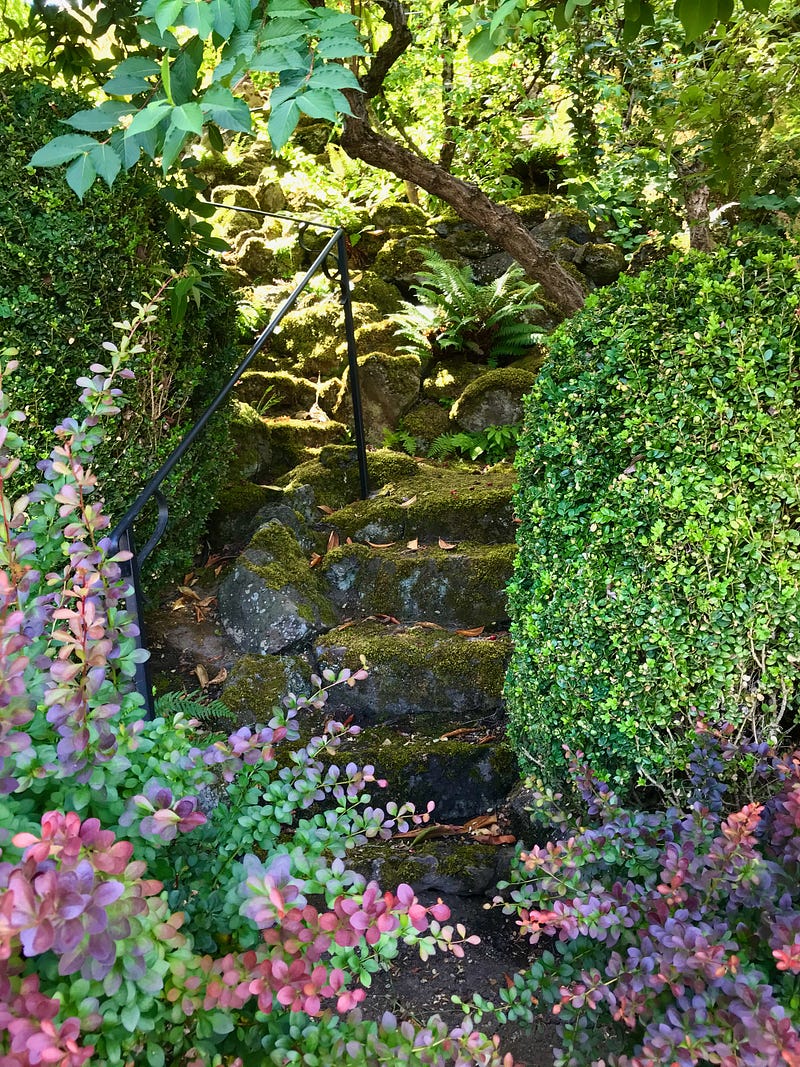
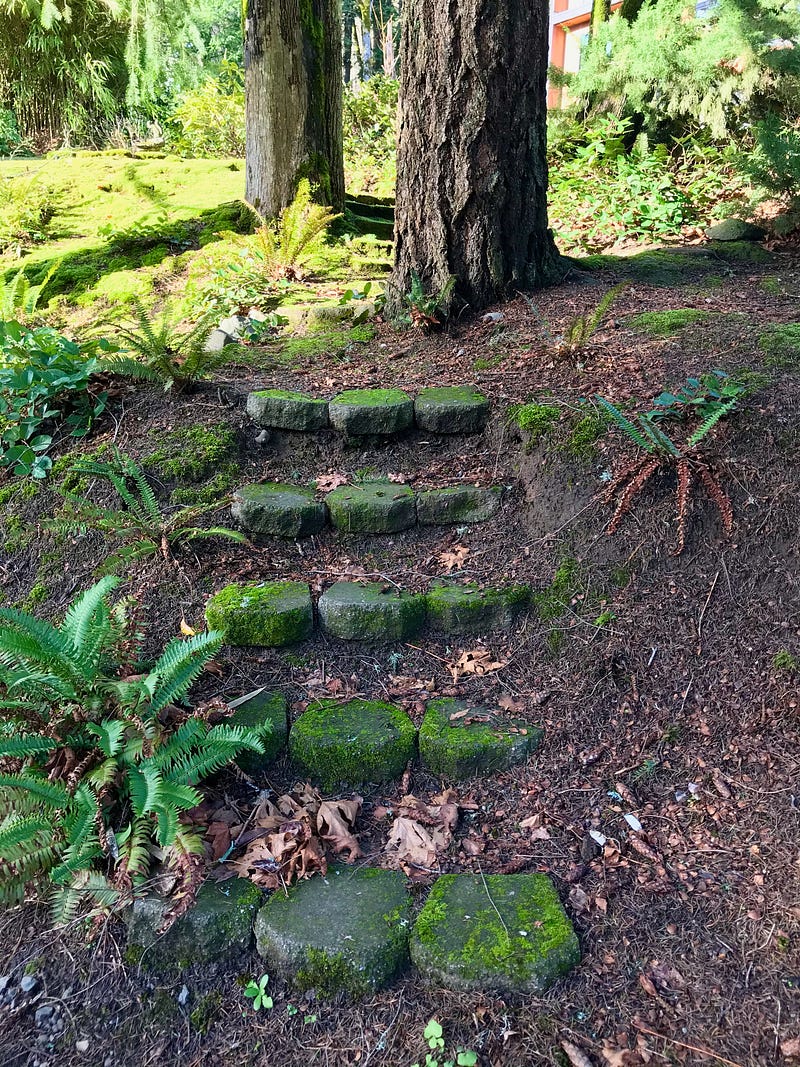
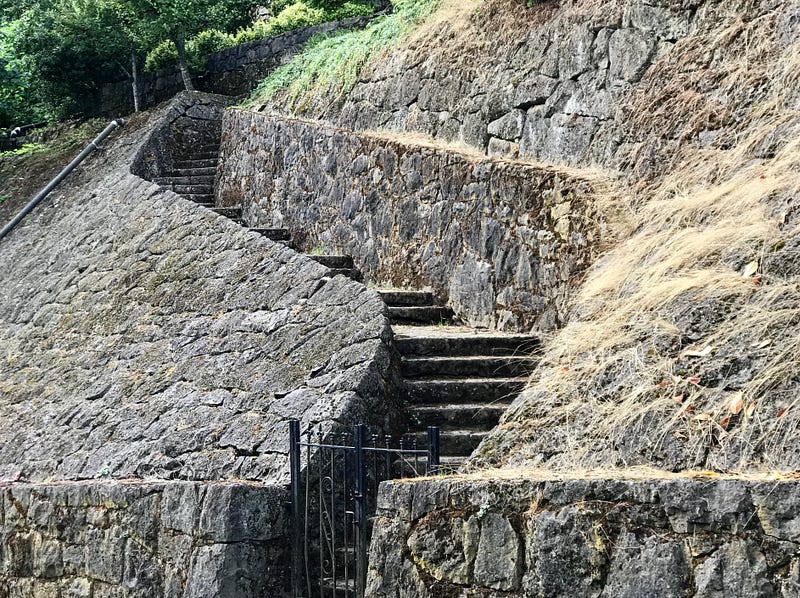
Sometimes the sculpted stone stairways verge on braggadocio.
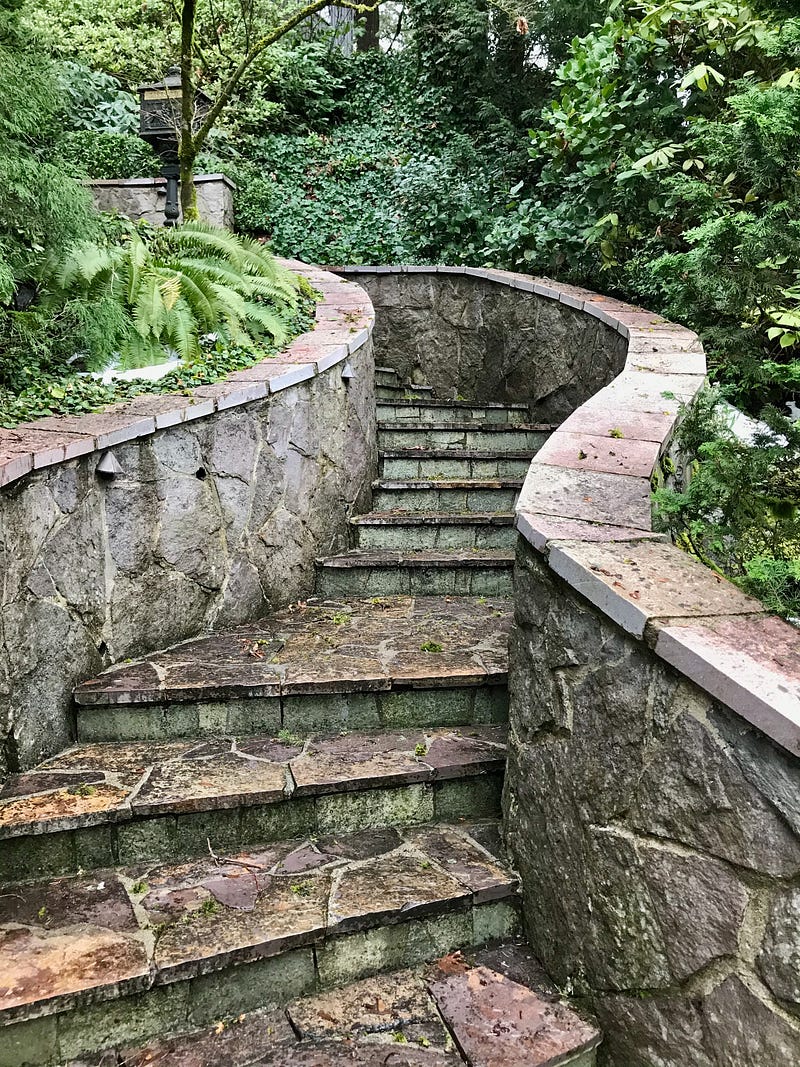
I mean, come on. Lovely, though.

Some are a bit more rough hewn than others.
Speaking of rough hewn: I think that’s a fair place to begin a comparison of these two cities.
Though Portland boasts many examples of interesting architecture, both domestic and public, it can’t and wouldn’t want to compete with Paris’s awe-inspiring monuments or fussily groomed public parks. Portland has its own vibe, which I’ve written fondly about elsewhere.
Portland is hip, down to earth, grubby, a beer city.
Paris is hip, direct and honest, sometimes rather dirty, and a wine city.
Yeah, there’s beer in Paris and wine in Portland. Thank heaven.
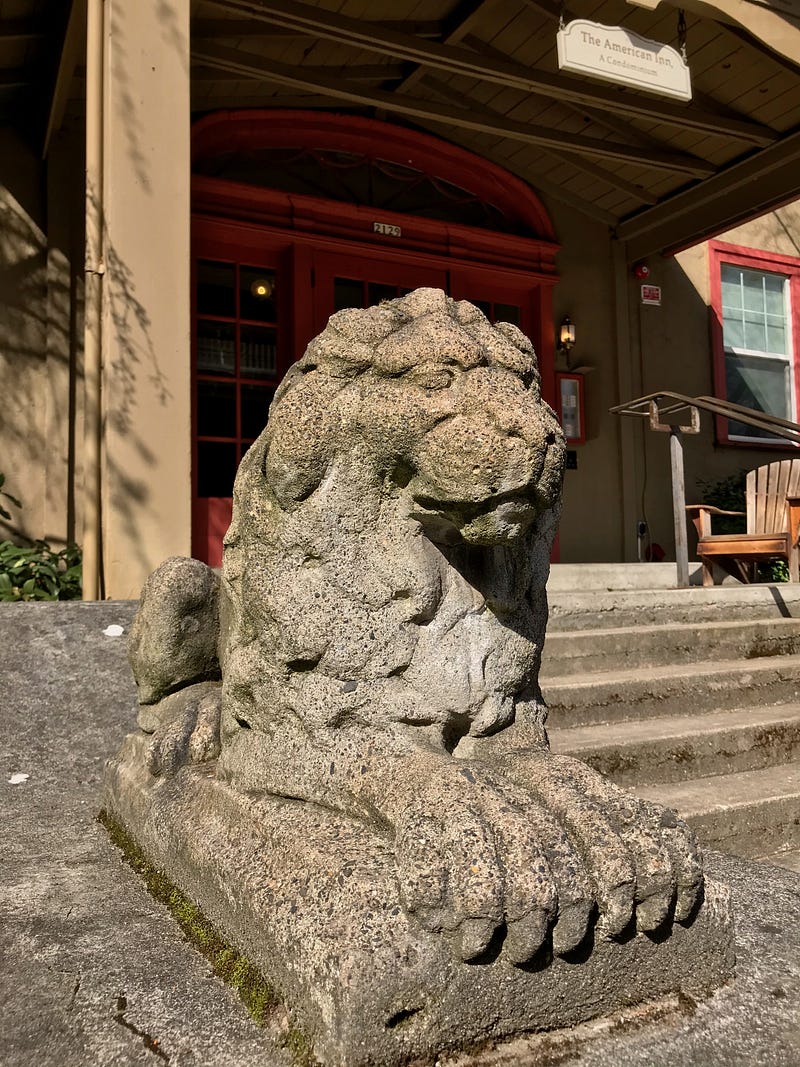

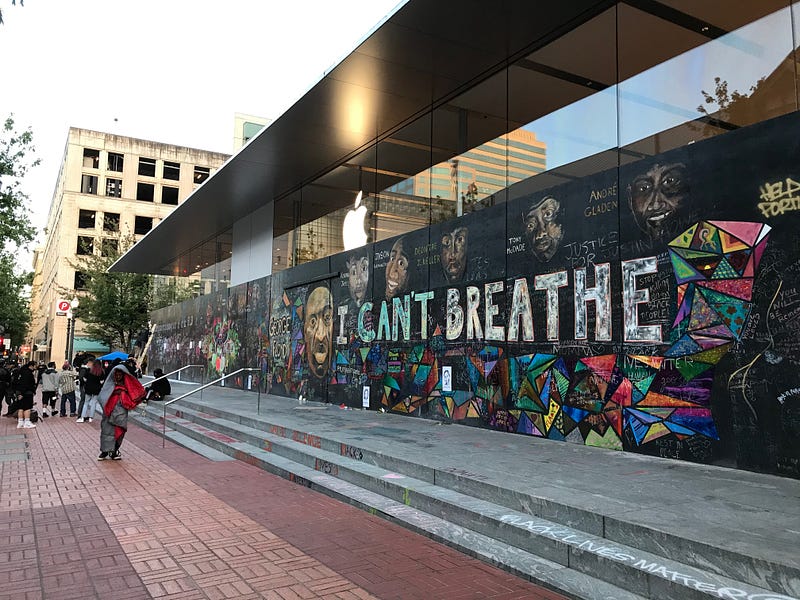
Portland has been through some tough times recently, marring its reputation as a magnet for Americans looking for a liveable city. It is a city culture of passion and conviction, which can create, well, trouble in troubled times. The stairs and walls above became a locus of expression: rage and determination to make change.
And Paris passion? Paris conviction? Oh my, yes. Bien sûr. Marches and demonstrations get their own category on the best city events web page, along with strikes.

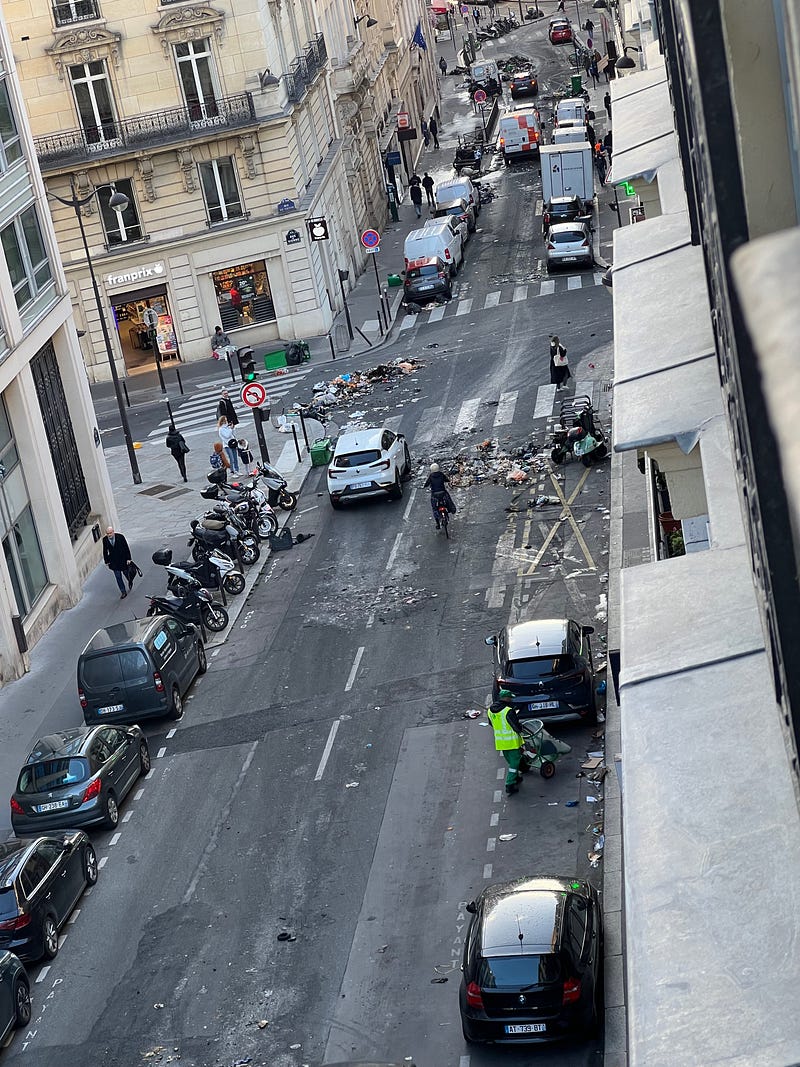
My neighborhood in the 8th was only mildly affected by the nationwide anti-Macron manifestations in March 2023, centered on the President’s determination to reform the retirement system, against all opponents. Above, the lycée students leaned Antifa signs against the mounting piles of garbage not collected by striking sanitation workers. And the second photo shows the remnants of garbage containers torched during a march the night before. Ironically, several months later, the city blockaded this section of the street with light gates, to keep the traffic from roaring through as part of a broader effort to keep Paris students safe in their comings and goings.

Sometimes I do feel a bit unbalanced in my loyalties. These places and their cultures are so different. A young friend, a longtime American transplant, joined me recently in celebrating the fact that Parisian fashion is slowly shifting from skinny jeans to baggy ones. At least our 501s can be in style for a year or so before things move back in the other direction.
But truly, here in Paris as in Portland, nobody much cares what you wear or where you came from. Maybe that’s what binds my “two loves,” as Josephine Baker sang a hundred years ago. And the stairs of Paris, like the stairs of Portland, may help keep me in shape as I move through the next decade.
Several more of my writings about Paris and Portland:
Thanks for reading!






